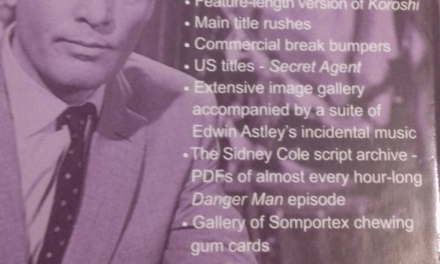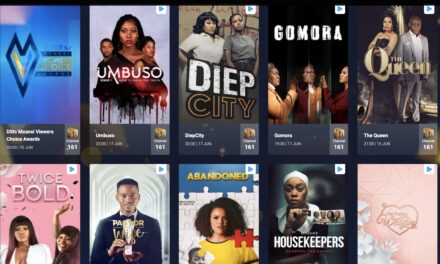I’ve got the Bieber fever. I am going to hold up a giant placard, with Justin’s name on, outside his St. Kilda hotel, with a thousand other screaming fans. I am going to shout, ‘I love you Justin’. Justin, just touch my hand. Please stand next to me in a coupling photograph. Can I kiss your cheek? Will you look fleetingly into my trembling eyes? Let me hear your Canadian (American) voice, Justin. I do love you. I have every record you have ever made, downloaded all your songs, your posters adorn my bedroom walls, I have your t-shirts, all your merchandising, and I use your acne cream. I’ve got the Bieber fever, Justin. I’ve got the Bieber fever…

In July 2012 Justin Bieber appeared on Channel 7’s Australia’s Got Talent and performed two songs, As Long as You Love Me (framed as his new single, ‘out now’) and If I was Your Boyfriend, the second global smash hit from his best selling album Believe (2012). The Got Talent format is now an international franchise, first developed in the UK and owned by Simon Cowell‘s SYCOtv Company. There are now 39 countries that have a version of the show in which aspiring entertainers battle it out to be crowned the country’s most talented individual.
Bieber’s appearance on Australia’s Got Talent, designated a grand final, markets his own star-celebrity image, promotes his new single and album, his back catalogue, his forthcoming tour of Australia (announced in the ‘interview’ segment of the show), the branded clothes he is wearing, the channel the show appears on, its media partners and subsidiary companies, and the show itself and its ‘authentic’ commitment to finding new, raw talent. This is something that Bieber directly validates since his own narrative of success is built upon being ‘found’ after posting several notable home-made YouTube singing performances.
Bieber produces the cult and commodified culture of celebrity. He appears on stage to wild screams, pulsating lights, frenetic camerawork, a sea of placards and banners that spell out his name and the hysteria he produces in his girl fans (a ‘Bieber fever’). He appears through two doors, which he pushes back, smoke and lights signalling his auratic arrival. Bieber sings of romantic love, heartache and desire, to electronic pop beats with catchy choruses that can be relayed, chanted back. Dancing girls and boys appear either side of him and they step and move in easy, quick-time formation. This is their chance to be noticed, to also be in the spotlight.
Every time Bieber moves a little closer to the audience he is greeted with loud screams, captured by a mobile camera that repeatedly cuts to the faces of young girls on the teary verge of ecstasy. They desire him absolutely as they imagine that he sings to and for each of them, or that his lyrics are confessional, intimate, or as ‘love-struck’ as they are. Widely reported in the media, Beiber’s romantic love affair with the equally beautiful Selena Gomez (also photographed with Bieber while he was in Melbourne), imaged through glamorous shots of them holding hands, roots affection to lifestyle choices they embody and reemerge in the ‘body’ of the lyrics he sings.

These teenage girls search for authenticity, for true moments of shared and reciprocated intimacy, but this is a search connected to purchasing his records, going to his shows, or through buying those magazines and ancillary products that he appears in or is connected to. The fever he is connected to is commoditised heterosexual romanticism. The fever he creates is intimately tied to buying and owning Bieber merchandising, product endorsements, collectables, posters, sneakers, and the scent of Bieber. This, then, is the intimacy of consumption as it is manufactured and circulated. Each of his items of clothing is branded goods, as is his trademark hairstyle. Bieber’s skin is flawless, acne free, the result of using Proactic acne cream, a product he endorses. From head-to-toe Bieber is a production line and the viewer/ fan a consumer.
Bieber sells the ideology of the Got Talent franchise which is made in the image of celebrity culture: that if you have talent you can make it (as he did) and that if you make it you will have success, adulation, fame and fortune, enacted through a replete consumption lifestyle. Bieber is imagined to have achieved celebrity status and this is something the show seeks to also produce – only the most talented will win through. During the interview segment we are told that Bieber’s album is number 1 in 30 countries, that his videos have a combined 3 billion Youtube hits, that he has over 44 million followers on facebook and that the night before his live performance on the show, his twitter following had grown to over 25 million. The interviewer frames Bieber as one of the most successful and deserving of contemporary pop stars, someone who wrote most of their latest album, as the ultimate star-celebrity, validating or promoting the importance of the show in turn, and the social media to which it refers (a dynamic set of product placement exchanges is seamlessly taking place).
Girls continue to scream, one rushes the stage, and is then pulled away by one of the judges (Brian Mcfadden). This leads to newspaper headlines (and the hope of increased sales with it) and a further set of promotional devices that propel Bieber and the show into national and international cultural visibility. The fracas also connects to McFadden’s own rebel rouser star status. The channel’s own website posts footage of the performance, and Bieber’s own public relations team are on hand to ensure that his appearance gets widely reported in international contexts, through other media outlets. Bieber constantly tweets how much he loves Australia and his facebook page is scattered with photos of his time in Australia. A Bieber collector’s edition of the monthly teenage girl’s magazine, Girlfriend, is published the week that Bieber is in Australia, full of pictures of Bieber, facts, biography, and confessional details. These become cherished mementoes of his time in Australia.
Channel 7 is owned by Seven West Media which also own The West Australian, the leading metropolitan newspaper in Western Australia, 21 West Australian regional newspapers, nine regional radio stations, Pacific Magazines which publish amongst others, Girlfriend, the weekly celebrity magazine, Famous, and the monthly television guide, TV Hits. Seven West Media also have 50% interest in Yahoo! 7, one of Australia and New Zealand’s leading online media platforms, and a 33% share in Sky News Australia. All of these outlets published stories of, or reported on, Bieber the week he appeared on Australia’s Got Talent, with Yahoo!7 offfering viewers a sneak preview of his performance, and Girlfriend having the Biber collector’s edition (see above). Channel 7 has established output deals with a number of American production studios, including NBC Universal, The Walt Disney Company and ABC Studios. NBC Universal has a relatioship with The Island Def Jam Music Group, who have a share in the record label that Bieber is signed to.
The branding of Bieber, then, involves a complex series of cross-media promotions and alliances that takes one from clothes, hair and acne cream, to the synergetic operations of multi-media corporations selling records, tours, television shows, newspapers, and the social media.
Celebrities are arguably the perfect vessels for an era of media convergence and transnational promotional synergies since they perform in or through one or more media (film, television, music, photography, gaming, radio), can advertise and sponsor any number of products and services in or through one or more media, and they can work across any number of media platforms within a singular transnational media corporation’s wide range of operations or relationships. Bieber is just one production line of many, and the viewer/ fan a constant consumer.
I had the Bieber fever. I raised my placard. I chanted his name. He came this close to touching my hand as I reached out to touch his as he rushed by the gated crowd. I swooned, felt his presence, and heard his voice like a song inside of me. I bought every magazine that had a Justin feature that week. I watched his appearance on Australia’s Got Talent fifty times over. I had the Bieber fever, I had the Bieber fever…
Sean Redmond is an Associate Professor of Media and Communication at Deakin University, Melbourne, Australia. He writes on stardom and celebrity, science fiction, screen aesthetics, and authorship. His latest book on The cinema of Takeshi Kitano comes out later this year with Columbia University Press.
Sean Redmond, Deakin University, Melbourne
s.redmond@deakin.edu.au





